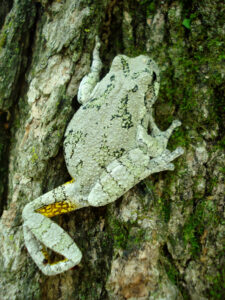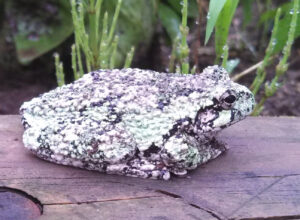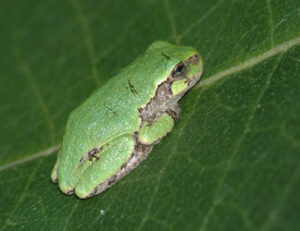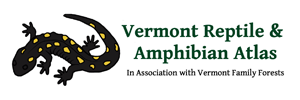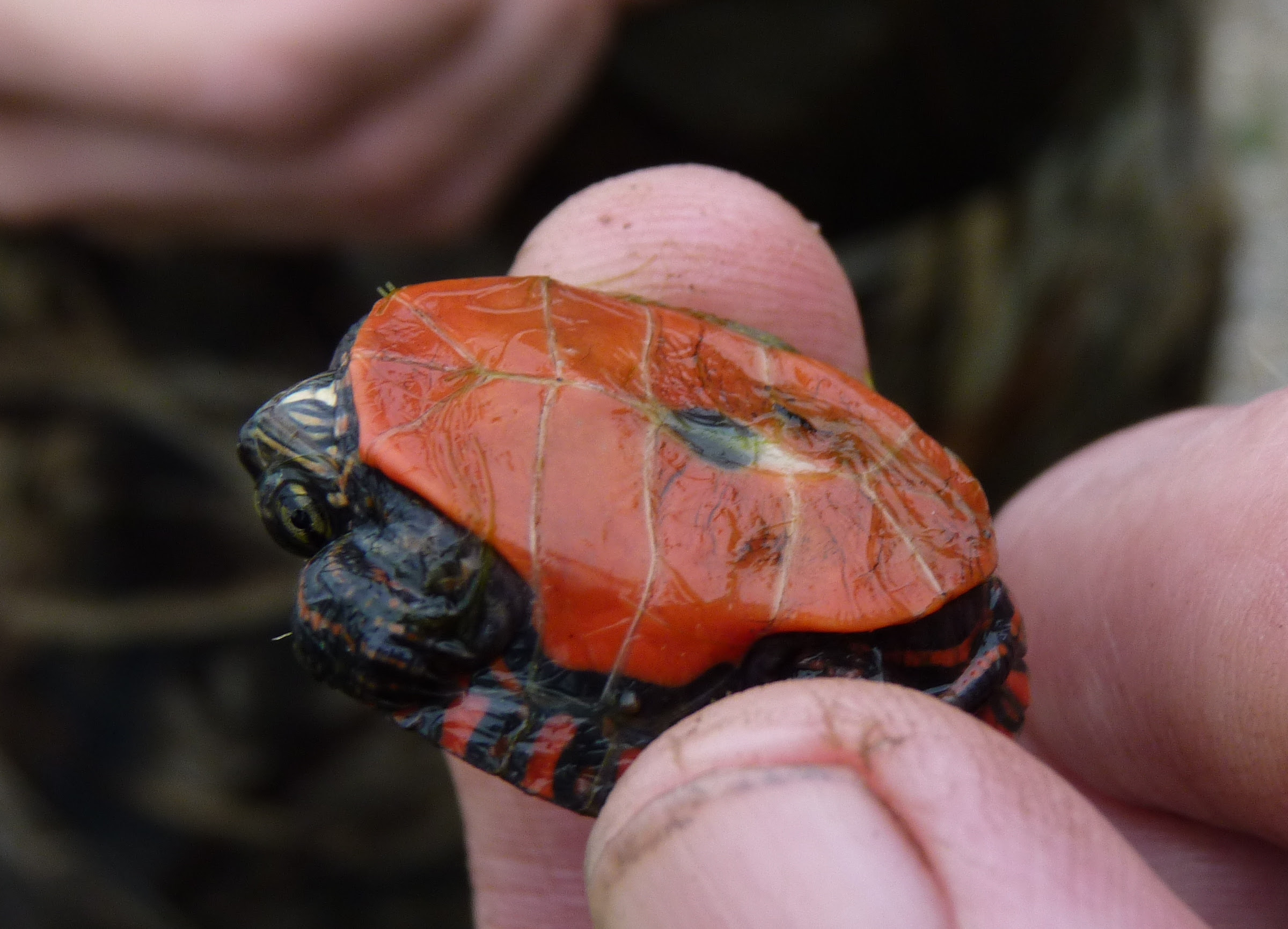
Herp Update: Salamanders, Turtles, Gray Treefrogs – May 23, 2025
Recent Herp Activity
With the recent cold and rainy weather we have concentrated our field surveys on our three saturated-soil salamanders (Spring, N. Dusky, and N. Two-lined in headwater streams and seepages, and Spotted Salamanders in ponds and vernal pools. This time of year is by far the easiest time of year to document Spotteds, since their egg masses remain visible for so long.
Kate Kelly and I have made recent trips to Glastenbury, Searsburg, and Berkshire and have successfully documented all four of these species in those towns. Searsburg was one of only a handful of Vermont towns where Spotted Salamanders had never been documented. That leaves only Barre City, North Hero, St. Albans City, and Winooski, where they have never been documented and Essex Junction (City) and Westfield from which we need updated reports and photos. It has been close to 25 years since they have been reported from Essex Junction and Westfield.
Despite the cold weather, young Painted Turtles are now emerging from the underground nests where they have spent the winter (photo below taken by Kelly Halloran). They are emerging only a couple weeks before the adult females leave their ponds to dig nests and lay eggs once again. Painted Turtles have never been reported from 18 Vermont towns. We also need updated photos from another 12 Vermont towns.
North American Snapping Turtles have begun digging nests already. This is definitely the easiest time of year to find and document them. You may find adult female Snappers in your yards, gardens, driveway, or along roadsides searching for sunny, vegetation-free, locations to dig nests. Additional females will be digging nests for at least the next month. Please do report them when you find them. Snapping Turtles have never been reported from 17 Vermont towns and we need updated photos from another 17 towns. You can use our searchable table to find out if we need reports of either of these two common turtles from your town. Easier still, you can just photograph and report any that you find.
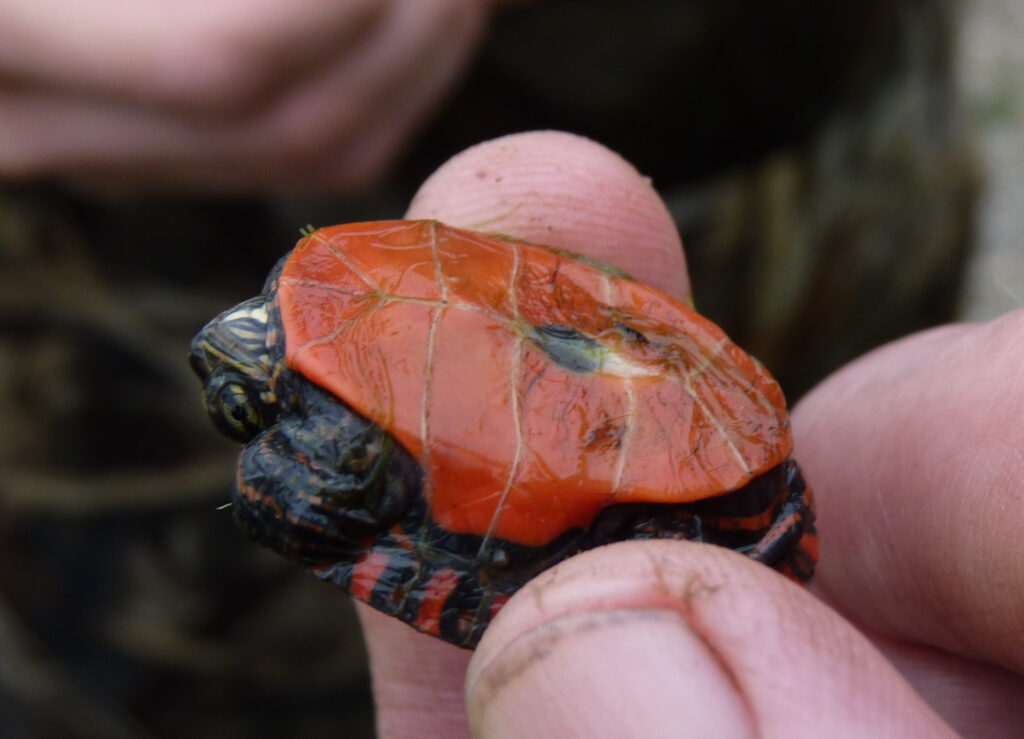
Upcoming Activity
When the warm weather returns, it will be our best opportunity to document Gray Treefrogs. We still have 34 towns in Vermont where Gray Treefrogs have never been documented and another 31 where reports need to be updated. To see the complete list of towns visit the searchable table on our website and type in Gray Treefrog. Our records suggest that they get very hard to find as elevation increases and disappear entirely above 2,800 ft. This may be the result of their preference for mature hardwood forests rather than the conifers that are found at higher elevations.
Gray Treefrogs can easily be located by just listening for their calls within roughly 1000 ft. of some pond or wetland. Their preferred breeding ponds have shallow margins and vegetation growing in and around their edges. Treefrogs will very soon be moving to those ponds to breed, but they call on warm days even when they are not breeding. Listen for their short machine-gun-like trill on our next warm day. If you hear one, please take a short video with your cell phone to capture the sound of the call and send it to us. We need your help in documenting this species.
The top Gray Treefrog photo below was taken by Molly Kennedy. The middle photo was taken by Aimee Gathalon. Gray Treefrogs are much more easily heard than seen, but if you are lucky enough to see one, its color may vary from white to almost black, and light green to dark green depending on the background that it is on. That said, the bumpy skin, adhesive disks on their toes, lichen-like markings on their backs, and yellow flash colors on the undersides of their legs, make adult Gray Treefrogs easy to identify. Very young Gray Treefrogs are solid green and lack most of the lichen-like markings. See the bottom photo below taken by Ron Haskell.
Please keep your ears open and your cell phone ready to help us document this very cool species.
